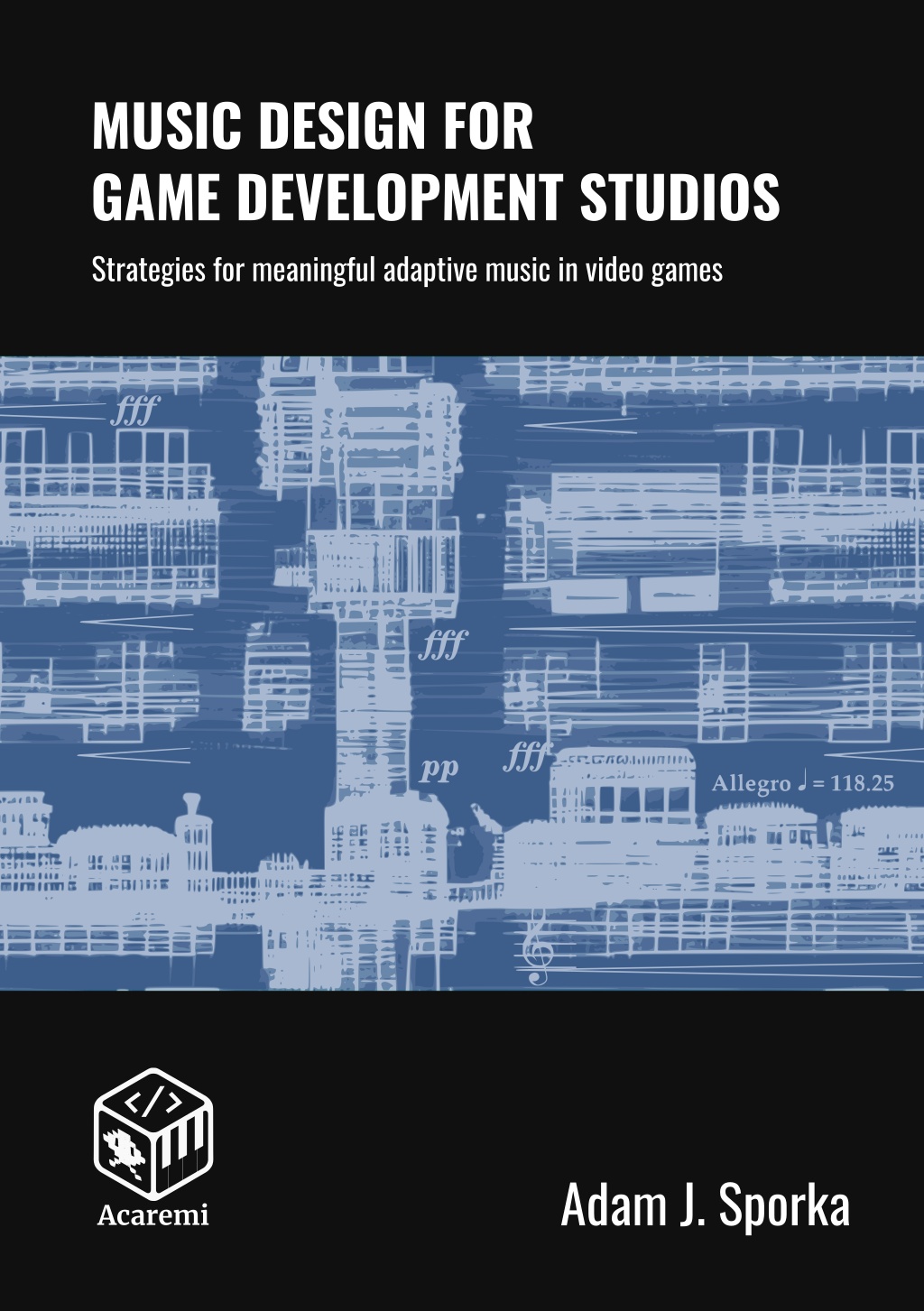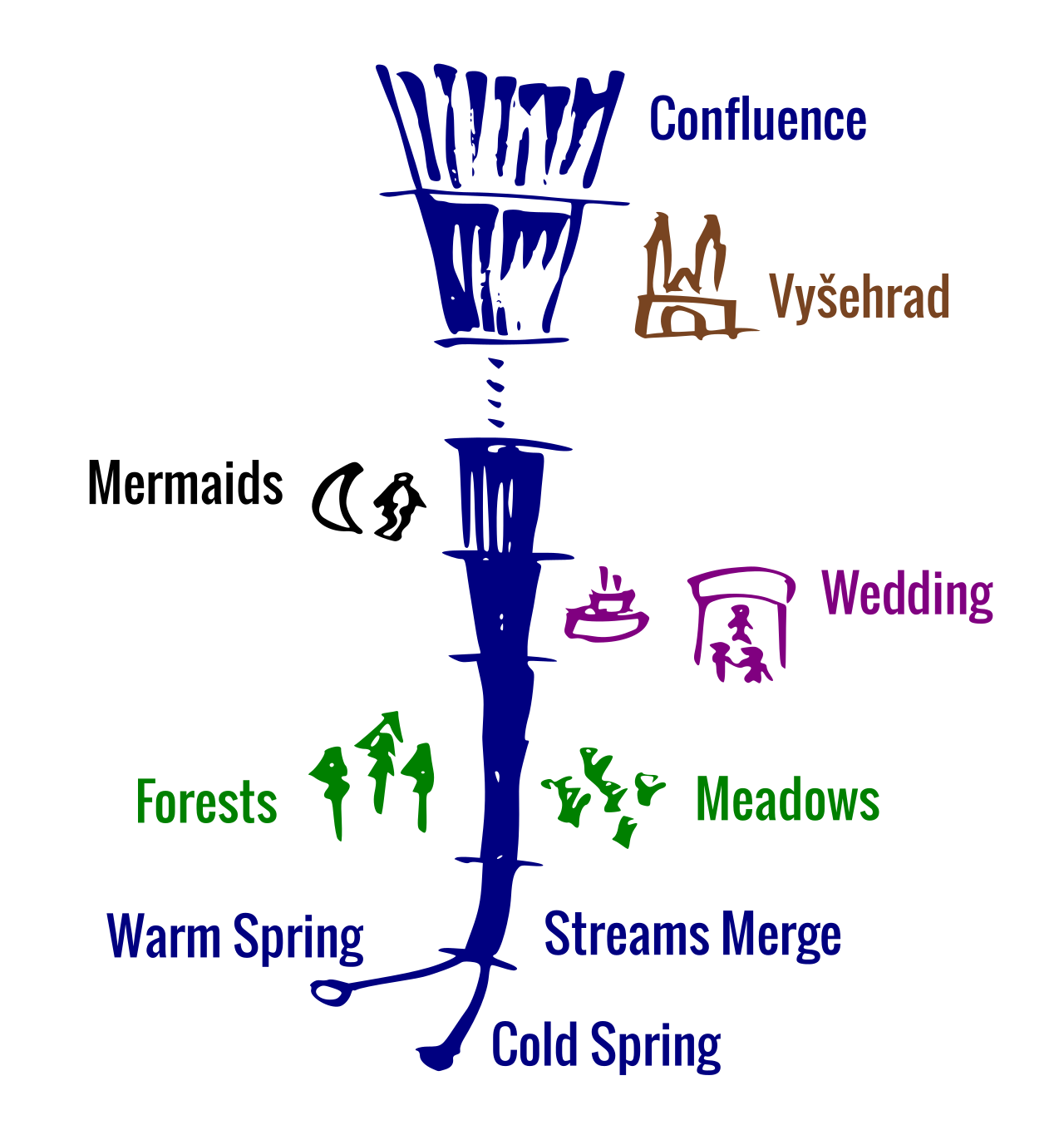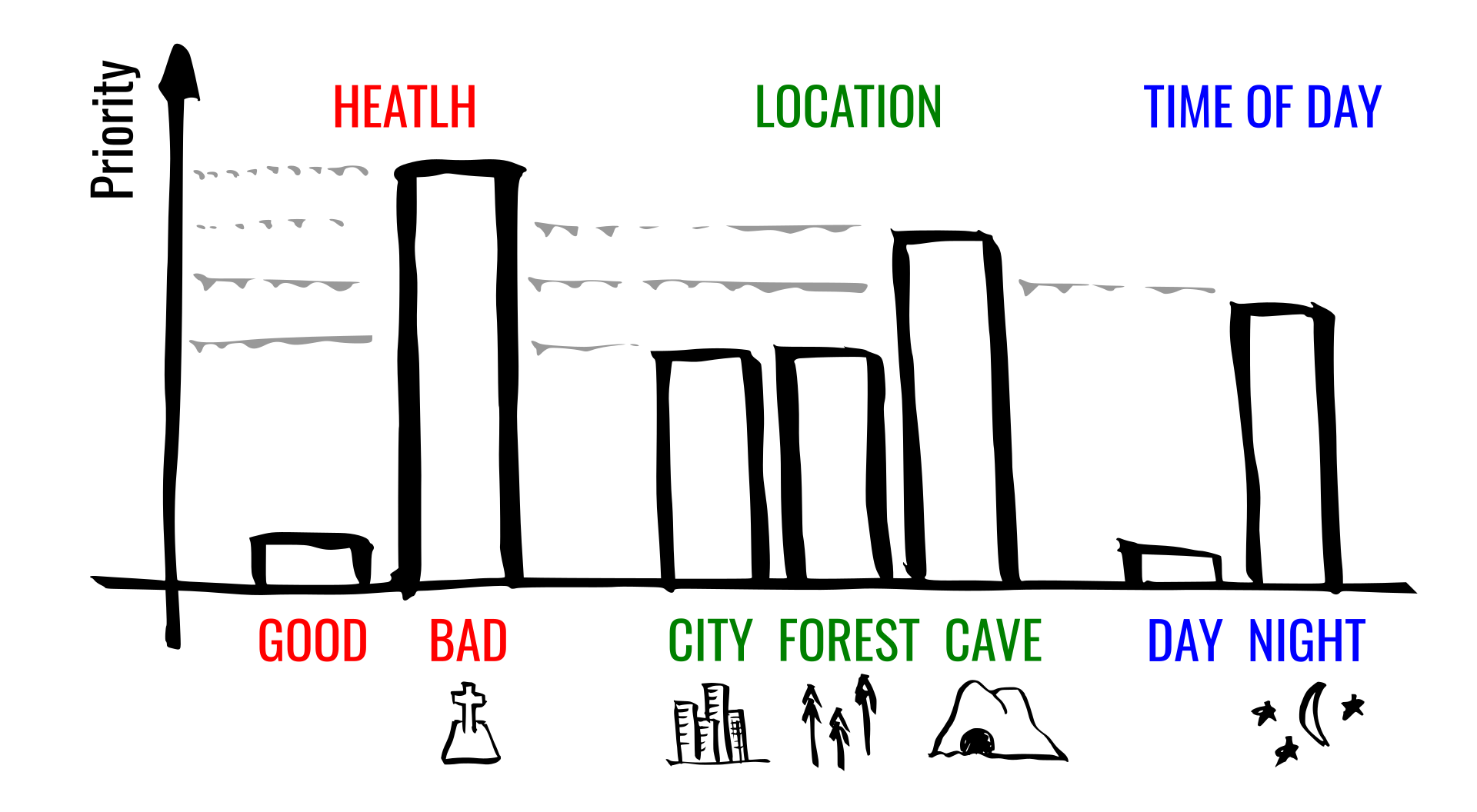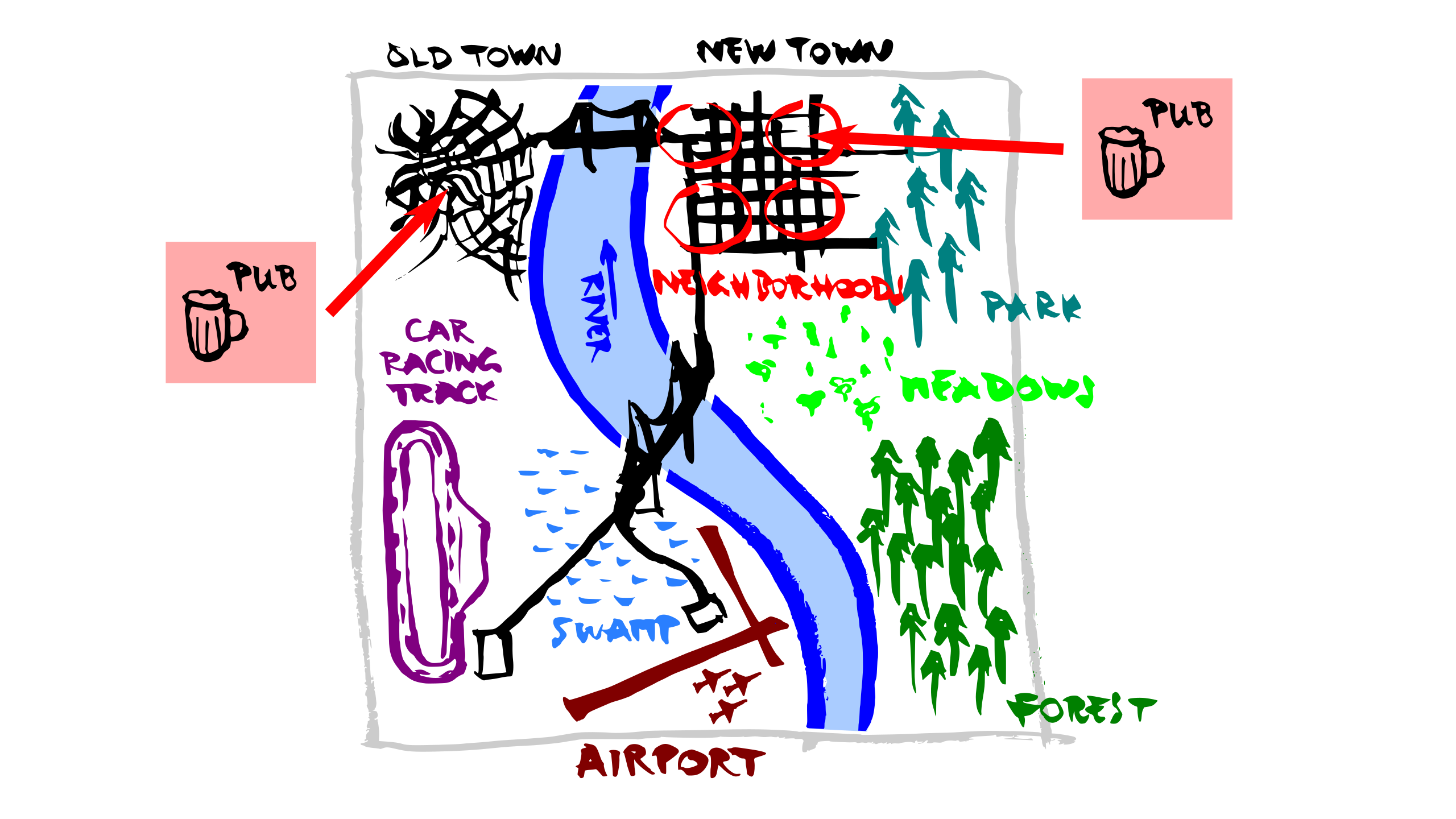Music Design for Game Development Studios
Strategies for meaningful adaptive music in video games

We present a book about music design for game designers. They are the people who are most likely to be the first in a game studio to think about the music in their game. At some point, they bring a composer on board but at that point, many decisions about the game, that have a direct consequence on the style and behavior of music, are already set in stone.
The aim of this book is to equip the game desginers with knowledge on music design so that they can make better design choices before writing a brief for their composer. This is where the book differs from similar titles on the market who predominantly target the musicians.
Quotes from the Book









About the Book

Based on an extensive, hands-on experience in designing and composing music for a AAA award-winning video game that sold over 5 millions of copies worldwide, Adam Sporka reveals the valuable how-to and his approach to technical music design.
The book provides a practical introduction to music design for large video games. The topics discussed include:
- How to identify possible reasons for music to play in the game
- How to resolve conflicts when multiple reasons are valid
- Techniques of adaptive music and how to structure your music for them
- Communication with other members of the development team
This is an "early access" edition of this book. You will get lifetime updates on your e-mail as updated versions of this book become available.
Music Design: Between Game Development and Music Composition
by Adam Sporka
ISBN 978-80-11-02314-0 (PDF)
"This book fills the void that has long been the weak point of games: music design (as the book's title clearly says).
Gone are the days when games with great visuals only win the market. Games with great music are increasingly sought
after and talked about. This book is a great first step for music designers/composers to understand what game
designers want in terms of the ambience, emotional tones and engagement they wish their games to convey. It is also
a great book for game designers to start deciphering what music design is really about."
—Sri H. Kurniawan
Professor at UC Santa Cruz
"This book is a must-read for composers who want to understand both basics of adaptive game audio and game
development team dynamics. I would also recommend it to those game studios that want to try implementing better audio
than simple playlists. While it will not help readers to compose better music, it will teach them to think about videogame
music dramaturgy and helps with understanding some basic principles of adaptive audio. Unlike some of the books out there,
this one is deeply rooted in the author's personal experience, where he provided his expertise as both composer
and adaptive audio engine creator in the game Kingdom Come: Deliverance. The practical, down-to-Earth approach is
where the game shines the most."
—Jan Kavan
Creator of award-winning video games
Lecturer at Janacek Academy of Music and Performing Arts, Brno
"This book is for you whether you are already a video game music designer or just starting with
music design for games. I have been working with Adam on several video game projects and I can tell
tell Adam found clever solutions to numerous music design problems."
—Vojta Nedvěd
Audio lead at Warhorse Studios
"Clear, consise, and to the point, this course will help you develop a consistent and effective strategy
for your game music. The practical tips (by an industry pro) contained in this course will help you avoid roadblocks
before they happen. A worthy investment for any game developer."
—Steve Kay
Independent professional music producer
Why Music Design?
Music can turn a game into an unforgettable experience for game players. The music designer makes that happen by choosing the right music for corresponding game elements and how this music responds in real time. Every location of the game's world, every gameplay element, and every twist of the story may give a cue for music to play.
Music design bridges game design, music composition, and development. All music-related decisions must be aligned with the artistic vision of the project's creative director, communicated to the composer, and assigned to the developers. If not, the studio will waste the composer's talent and miss an opportunity to make the game more compelling through astounding music.
Composers will always differ in their taste and opinion on which music should be used for which situation, but they agree on one thing: Making the music for video games should not start with its composition but with its design. This is especially true for large, open-world RPGs with many hours of music and a hundred hours of gameplay.
Design can be seen as identifying the "opportunities" for music in the game and figuring out their order of importance. Then it is decided what technical structure the music should have in order to be able to provide an interactive experience. Only then the project is ready for a game music composer.
Table of Contents
- Important of Music
- Making Music for Video Games
- Design First, Compose Later
- Music Design and Implementation
- Movie Soundtracks vs. Video Game Soundtracks
- Adaptive Music
- Procedural Music (= Generative Music)
- Static Music
- Sources of Information about the Game
- Ownership of Music
- Music Must Be Legible
- Genres
- Choosing a Genre
- Genres are Languages
- What is "Good Music"?
- Genres in Adaptive Music
- Types of Music
- Musical Contexts
- Simultaneous Contexts
- Numeric Parameters
- When to Change the Music?
- Amount of Assets
- Use of Silence
- Frequency of Changes
- Musical Contexts in Kingdom Come: Deliverance
- Location-driven Contexts (Exploration Music)
- Biomes
- Indoor / Outdoor
- Day / Night Cycle
- Sunset and Sunrise
- Weather
- Stealth, Trespass, and Crime
- Combats and Conflicts
- Combat in Kingdom Come: Deliverance
- Minigame Contexts
- Dice Minigame in Kingdom Come: Deliverance
- Racing
- Story-driven Contexts
- GUI-driven Contexts
- Music for Dialogs
- Scenes and Transitions
- Selection Conditions
- Linking Segments
- Duration and Silence
- Segment Durations with Live Recordings
- Choice of Nominal Duration
- Resequencing with Partial Segments
- RGB Transitions in Kingdom Come: Deliverance
- Gregorian Chant in Kingdom Come: Deliverance
- Resequencing with Harmonic Progressions
- Three and More Mixes
- Layering with Transients
- Layering with Melodies
- Polyphony
- Versions of Melody
- Playback Modulation
- Reorchestration in The Space Game (2009)
- Audio Implementation
- Music Implementation
- Game-side Music Model
- Dynamic Balancing of Context Exposure
- Sample Rate Mismatch (44,100 vs 48,000)
- Sample Rate Drift
- Channel Order Mismatch
- Using FPS for Music Timing
- "You're Riding on a Horse, You're Riding on a Horse, You're Riding on a Horse"
- Long Cutscene Set-up Time
- Music After Cutscenes
- Stingers Too Similar to In-game Music
- When to Get Involved
- People Who Provide Input
- People Who Need Input from You
- People with Similar Interests
- Spotting Sessions
- Discussing Music with Non-Musicians